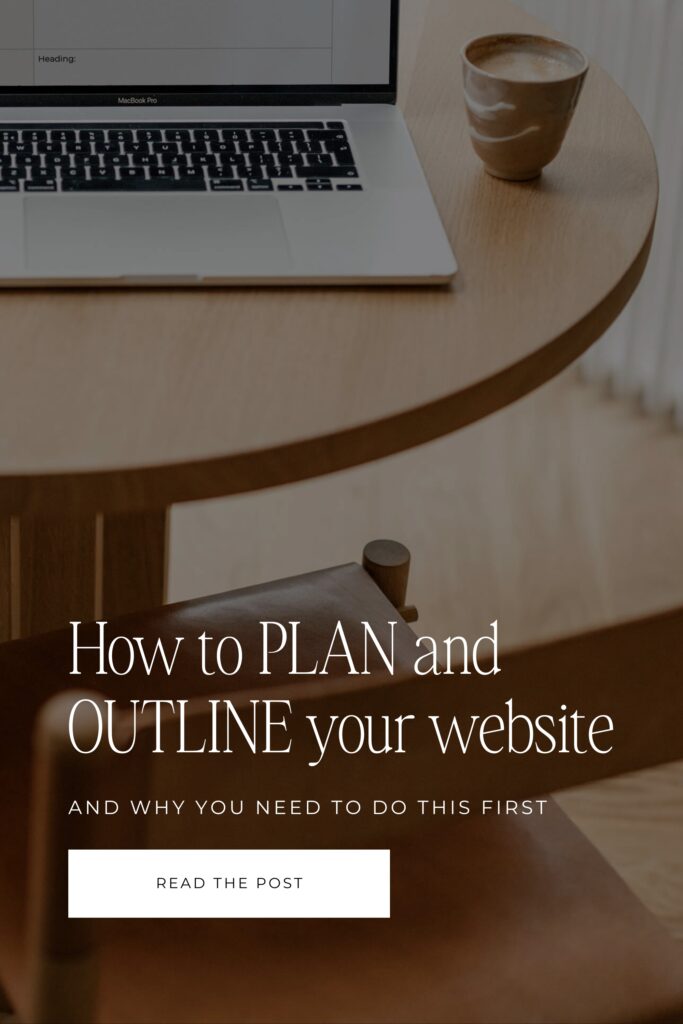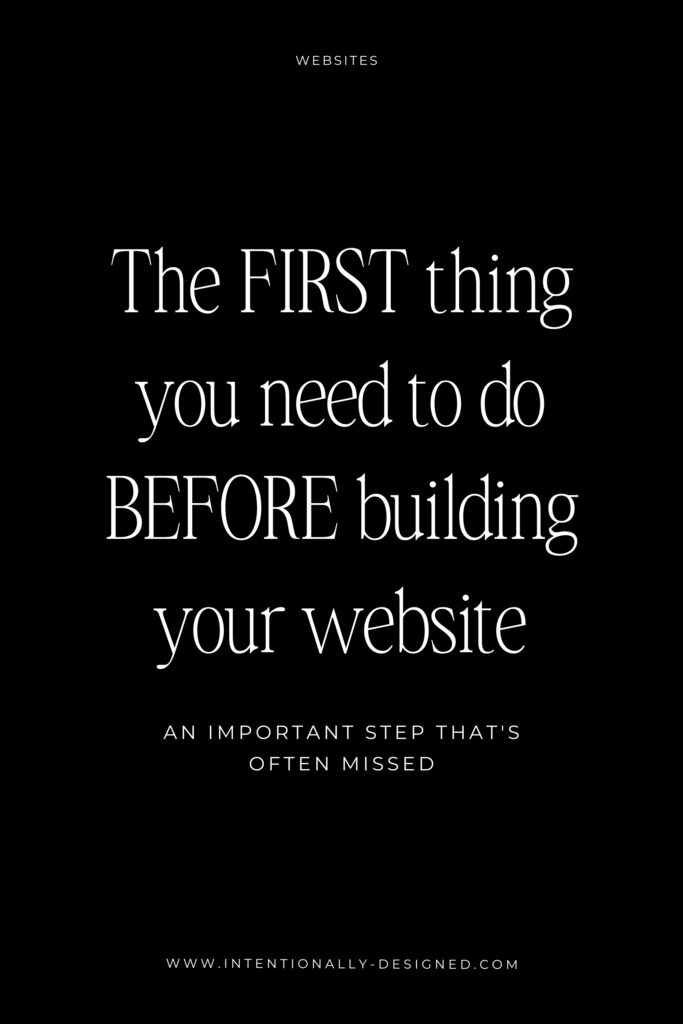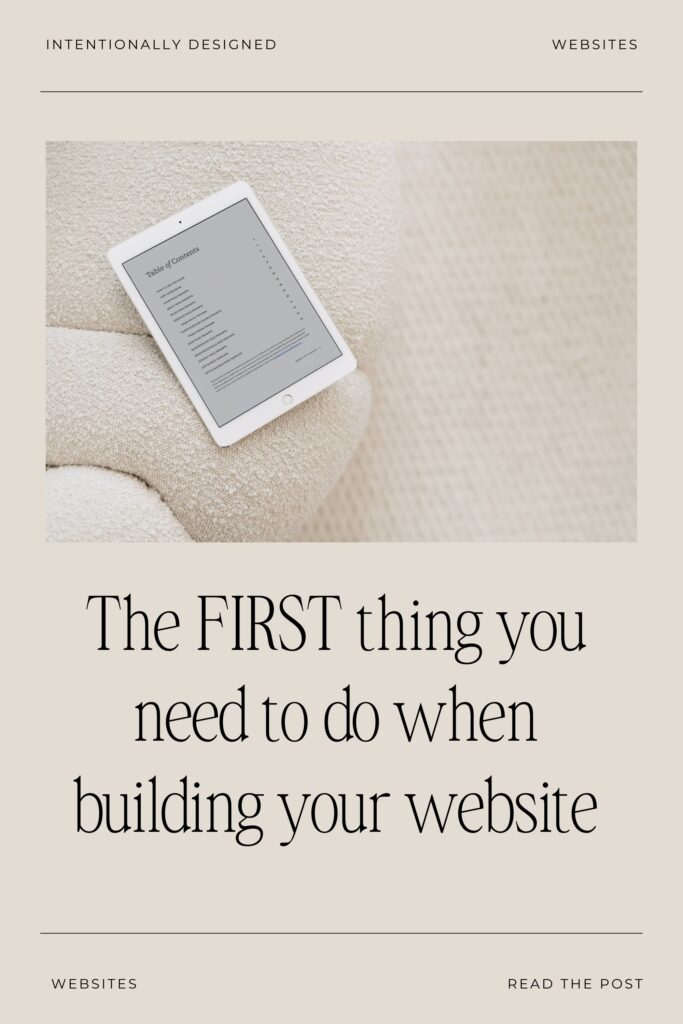When it comes to websites, things can easily get out of control or overwhelming. You may start off small or think you don’t have a lot of content to include, but once you get into it, you’ll probably realize there’s more to it than you thought.
But as with everything, it’s much easier to approach when you have a plan. By planning your website and outlining your content before you get too far into the process, you (and your designer) will be more prepared and end up with a better outcome because of it.
Why you need to plan and outline your website first
I’ve heard a lot of people say they don’t know what they need on their website until they see the design. However, it doesn’t work out very well if you design a site without knowing the goal and flow of the site. It’s important to think ahead about what you want your site to do for your business, what kind of content and pages will do that, and how you want it to flow overall.
It helps to know what you need from your website so that it can direct the design, layout, and function of the site. This will help them tremendously to know what the design needs to portray and how your site should be guiding visitors through. A design can change dramatically after knowing what content goes on each page but if you do this step first, you’ll avoid doing more work in the end.
How to strategically plan and outline your website
A strategically built website goes beyond the front-end visuals you see on the page. There are a couple of key steps to take when planning for your website.
1. Revisit your brand foundation
Before beginning any work on your site you need to review your business, brand, and people. It’s important to revisit your brand foundation for clarity before trying to build out a website because that brand foundation is what will essentially guide your website flow and content.
Need a better brand strategy? Grab the Brand Strategy Blueprint Course.
2. Determine your website goals and purpose
All websites have a purpose. And while the bottom line of most websites is to make sales in one way or another, it isn’t the only thing websites are good for. Your website is an interactive tool for you to engage with your audience on their time, without you needing to be there.
3. Map out the behavior flow
As people scroll through your website, your visitors want two things: to know that they’re in the right place and to be kindly told what to do and where to go next. A behavior flow serves as a guide for that, illustrating how you plan to walk people through your website.
4. Determine the navigation and sitemap
Now that you know the main purpose, goals, and behavior flow, you can make sure that the information you need is included and organized to maximize its potential. You can look at it with a big-picture perspective and add, move, or delete pages easily before getting too far into the process.
Planning and outlining your website ahead of time will greatly benefit you when moving through the website development process. Taking the easy steps can help you create a strong and intentional plan for your site.
After you’ve mapped out the strategy for your website, you can move to the copy. Just like the strategy, it’s much more beneficial to have all your content written and ready before you build your website. Then you’ll be able to more easily and effectively build your website.
Need help with this step?
Grab the Website Planner and Content Workbook for a step-by-step guide on how to visualize your website structure, plan your user experience, and write your website copy with ease.
More Resources
- 3 Things that need to happen before you build your website
- How to DIY your website the right way
- 4 pages you should have on your website you probably didn’t know about
- The Brand Strategy Blueprint course
- The Website Planner and Content Workbook
Save for later
Enjoy this article and find it helpful? Pin this image on Pinterest so you’ll always have this info on hand!









